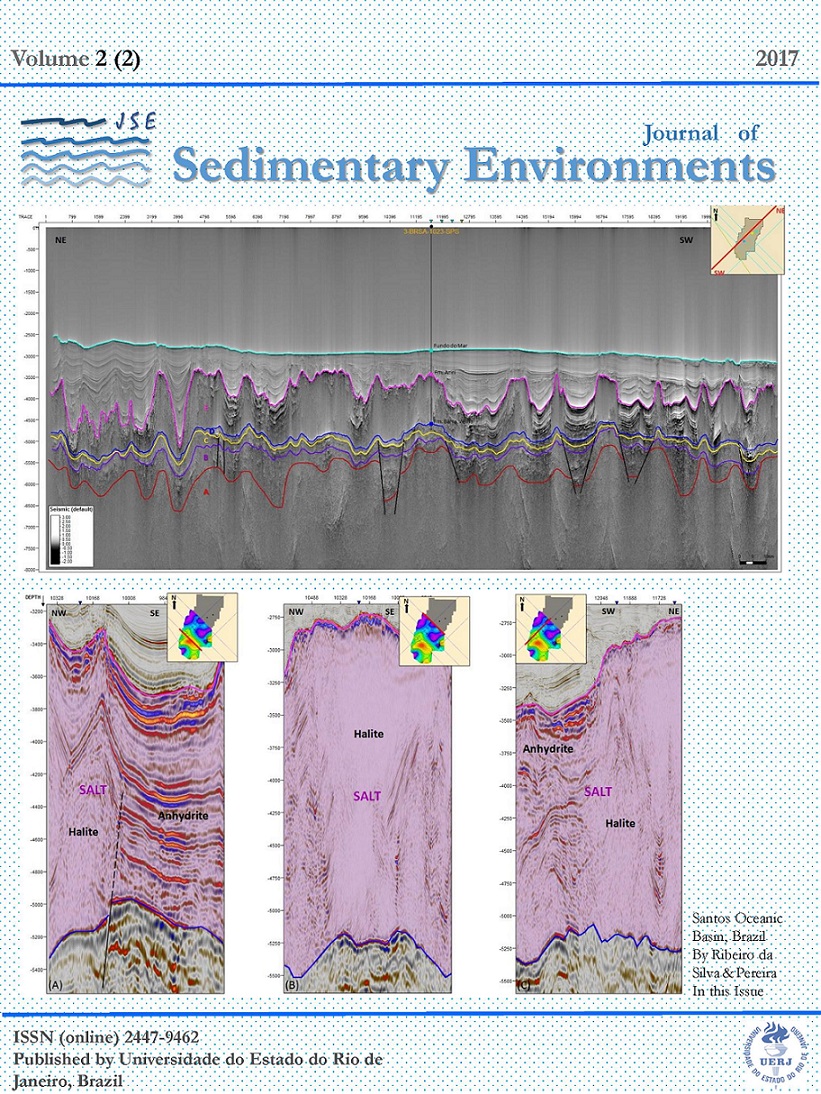TECTONO-STRATIGRAPHIC EVOLUTION OF LAPA FIELD PRE-SALT SECTION, SANTOS BASIN (SE BRAZILIAN CONTINENTAL MARGIN)
DOI:
https://doi.org/10.12957/jse.2017.30052Keywords:
Pre-salt. Lapa Field. Santos Basin. Seismic-stratigraphy interpretation. Velocity model.Abstract
Santos Basin is located in the southeast of the Brazilian continental margin and was created by rifting processes during the Gondwana break up and opening of the South Atlantic, initiated in the Neocomian (Cretaceous). The area gained renewed attention from the oil industry due to recent Petrobras' huge discoveries of carbonate reservoirs below the salt layer (Pre-salt). The discovery of this new play in deep and ultra-deep water opened a new exploratory frontier in Brazil, generating excellent economic prospects for the country. The case study of this work is the Lapa Field, discovered in 2007 by Petrobras, which is located in deep water and represents one of the largest producing fields of the Pre-salt.
This research aims to improve the actual model for the tectono-stratigraphic evolution of the Pre-salt section on the Santos Basin (Brazil). The used database includes the public data provided by National Petroleum Agency (ANP; six post-stack 2D seismic lines migrated in time and four wells). Main Pre-salt horizons and faults were mapped considering the Exxon Model to do the seismic-stratigraphy interpretation. A velocity model was constructed for the Lapa field, which enable the generation of isopach maps. All these products allow a better visualization of the tectono-stratigraphic evolution of the region and also show the salt thickness variation, analyzing the reason of its behavior.
Downloads
Published
Issue
Section
License

Journal of Sedimentary Environments (JSE) is licensed under a Creative Commons Attribution-Noncommercial-Share Alike 4.0 International License.

